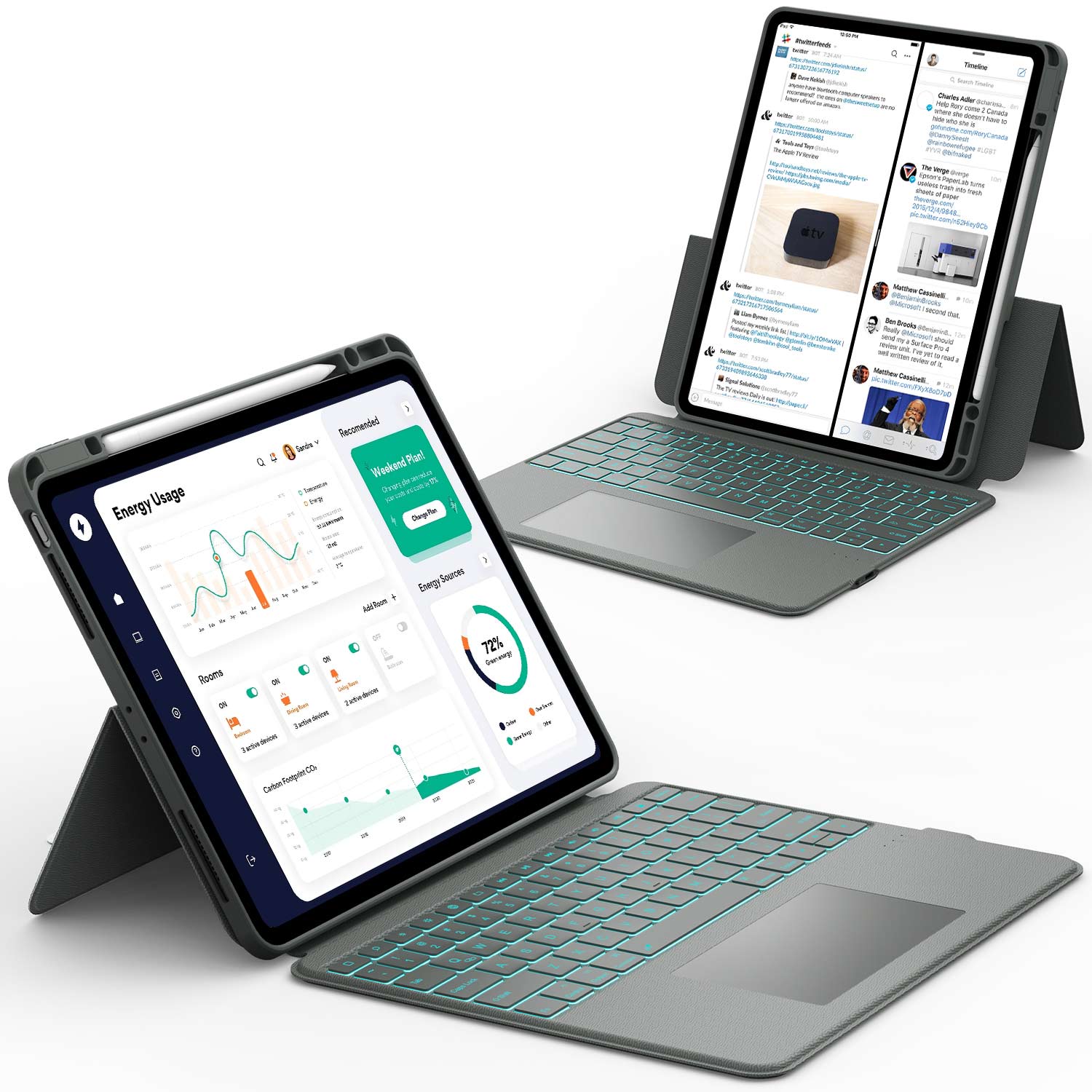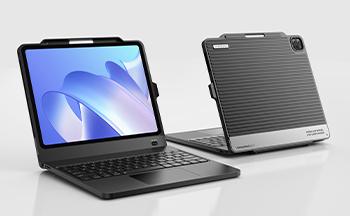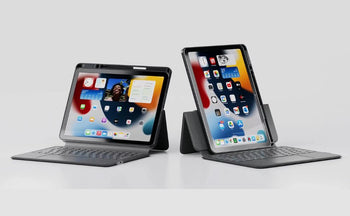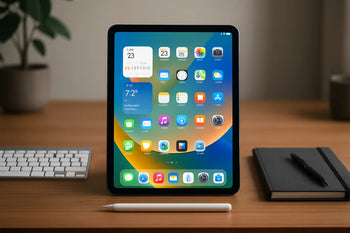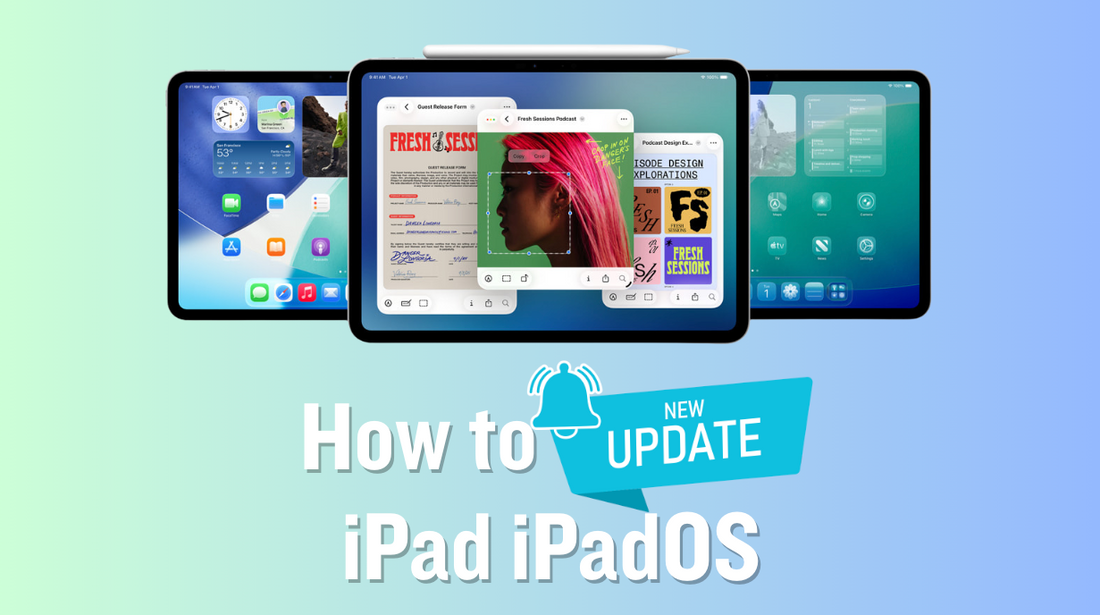Keeping an iPad updated is important because it helps the device run smoothly, adds new features, and improves security.
The easiest way to update an iPad is to connect it to Wi-Fi, go to Settings, tap General, then Software Update, and follow the on-screen steps.
This quick process makes sure users have the latest version of iPadOS with all the newest improvements.
Some people may encounter issues such as insufficient storage, updates not appearing, or needing to use a computer to update.
Knowing what to do in these situations can help avoid delays or confusion. These tips will help anyone update their iPad with confidence, enabling them to enjoy optimal performance from their device.
Quick Takeaways:
- Over-the-Air (OTA): Go to Settings > General > Software Update
- Via Computer: Use Finder (Mac) or iTunes (PC) to update
- Recovery Mode: Force restart if iPad won’t update normally
- Before Updating: Backup iPad & ensure 50%+ battery
Checking for Updates on Your iPad
Ensuring the iPad is running the latest version of iPadOS keeps it secure and provides access to the newest features. Users can find update settings, check which version is installed, and know what to expect from update alerts.
How to Locate Software Updates in Settings
To check for an iPad update, start by unlocking the device and opening the Settings app. On the left side, select General. From there, tap Software Update on the right side.

This screen displays whether a new iPadOS update is available. If an update is available, a "Download and Install" button will usually be present. Following the on-screen steps allows users to get the latest software update.
If there's no new update, the iPad will indicate that it's up to date. Automatic update settings can also be found in this area, under Automatic Updates at the bottom of the screen.
Determining Current iPadOS Version
Knowing the current version of iPadOS helps users decide if they need to update. This information can be found in the Software Update section. Once inside, the iPad shows the currently installed iPadOS version at the top of the page.
For more detailed information, users can go to Settings, then tap General and select About. Look for the field labeled Software Version. This displays the exact number, such as 17.5.
Keeping track of the version is useful when comparing features or troubleshooting issues. If users contact support, having the version number ready speeds up the help process.
Understanding Update Notifications
The iPad offers clear notifications when a software update becomes available. These alerts often appear as pop-ups or badges on the Settings app. Update notifications might display a message like “A new iPadOS update is available.”
Users can choose to install the update immediately or at a later time. Updates usually download automatically when the iPad is connected to Wi-Fi and charging, provided automatic updates are enabled.
Here’s a quick list of how notifications work generally:
- Badge icon: A red dot in Settings indicates an update is available.
- Pop-up notification: Appears on the home screen when the update is ready.
- Settings prompt: Directs the user to download and install the latest iPadOS update.
It is important to pay attention to these prompts to keep the iPad up to date and secure.
Also Read: Samsung Tablet Software Update: Latest Features & Fixes
Preparing Your iPad for an Update
Before updating an iPad, it is essential to check if the device supports the new version, back up important data, and ensure there is sufficient free storage. Taking these steps helps avoid problems and keeps data safe during the update process.
Device Compatibility and Supported Models
Not all iPads can run the latest iPadOS updates. Apple usually offers new software for newer devices such as the iPad Pro, iPad Air, and recent models of the iPad mini.
To find out if an iPad is compatible:
- Go to Settings > General > About to check the model.
- Visit Apple's official support page and compare the iPad’s model with the supported list.
- Older devices might stop receiving updates after a few years.
Generally, iPad Pro models and newer iPad Air and iPad mini devices are supported for a longer period. If the iPad is not listed, the update may not be available for it.
Backing Up Your Data Safely
It is important to back up the iPad before any update. This protects important information, such as photos, apps, and notes, in case something goes wrong during the update.
Ways to back up an iPad:
-
iCloud Backup:
- Go to Settings > [your name] > iCloud > iCloud Backup
- Tap Back Up Now
-
Computer Backup:
- Connect the iPad to a computer
- Open Finder (on Mac) or iTunes (on Windows)
- Select the iPad and choose Back Up Now
Make sure the backup is complete before starting to update. This step ensures that your settings and files remain safe.
Ensuring Sufficient Storage Space
Every iPad update needs some free space to download and install the new software. Typically, updates require at least 3 to 5 GB of space, but this may vary depending on the update size and device model.
Steps to check and free up storage:
- Go to Settings > General > iPad Storage to see the available space.
- If space is limited, consider deleting unused apps, old photos, or videos.
- Use the Offload Unused Apps feature in settings, which removes apps but keeps their data.
Keeping storage free helps the update install smoothly, as running out of space can cause errors or prevent the update from completing.
How to Update iPad Wirelessly

Updating an iPad wirelessly is simple and only requires a few steps. Good Wi-Fi, enough battery, and following the update prompts will help avoid most problems.
Connecting to a Stable Wi-Fi Network
Before starting an iPad update, making sure there is a reliable Wi-Fi connection is important. Software updates can be large and might not download if the connection is weak or keeps dropping. Public Wi-Fi at cafes or stores is not always secure or strong enough, so it’s better to use home Wi-Fi.
Steps for connecting to Wi-Fi:
- Go to Settings on the iPad.
- Tap Wi-Fi.
- Make sure Wi-Fi is turned on.
- Pick a trusted network and enter the password if asked.
A stable Wi-Fi connection prevents downloads from failing and helps make the update process faster. Some updates may not be possible unless the iPad is on Wi-Fi and not mobile data.
Downloading and Installing Updates
First, open the Settings app. Tap General, then Software Update. The iPad will automatically check for new iPadOS updates. If one is available, the device displays the details about the update.
To begin, tap "Download and Install." You may need to enter a passcode. The update will first be downloaded, and then the iPad will prepare it.
Finally, tap "Install Now" to begin the installation. The device will restart automatically after installation starts.
Important tips:
- Ensure there is sufficient storage space for the new software.
- Leave the iPad alone while it updates so nothing stops the process.
Plugging in for Power During Updates
A software update may take some time and consume a significant amount of battery.
It is essential to plug in the iPad or ensure the battery is at least 50 percent charged before starting. If the battery dies during an update, it can cause problems.
Why plugging in matters:
- Prevents the iPad from shutting off during the update.
- Provides steady power, which helps the update complete without interruption.
- Some updates cannot start unless the device is plugged in or has sufficient charge.
Using the official Apple charger can help speed up charging and keep the device safer while updating to the latest iPadOS version.
If the iPad is low on charge, plug it in before choosing Download and Install.
Also Read: iPad Widgets Explained: Add, Stack, Organize
How to Enable Automatic Updates on an iPad
Keeping an iPad up to date is simple with automatic updates. Users can set their device to download and install the latest software at the optimal time, reducing the likelihood of missing important updates.
Turning On Automatic Downloads
To ensure the iPad receives the latest iPadOS updates automatically, users must enable automatic downloads.
They should:
- Open the Settings app
- Tap General, then Software Update
- Select Automatic Updates
- Turn on both Download iPadOS Updates and Install iPadOS Updates.
For app updates, go to Settings > App Store and switch on App Updates under Automatic Downloads.
If the iPad supports it, users can also turn on automatic downloads while on cellular data.
This setup allows the iPad to manage both system and app updates automatically, eliminating the need for manual checks.
Users get peace of mind, knowing their device will often stay up to date on its own.
How Automatic Updates Work
When automatic updates are on, the iPad checks for new software updates in the background.
As long as the device is:
- Plugged in to charge
- Connected to Wi-Fi
- Not being used
The download will happen quietly, most often overnight. After the update downloads, the iPad can install it automatically.
System software updates like iPadOS are handled this way, and the same goes for app updates if the setting is turned on.
Some updates may require additional steps, such as entering a passcode.
If an error occurs, the device may attempt to retry during the next window when the conditions are favorable.
Benefits of Automatic Updates
Automatic updates help make sure the iPad gets important security improvements and bug fixes quickly.
Here are some direct benefits:
- Less chance of missing major software or app updates
- Faster access to new features and fixes
- Improved security without extra effort
- Reduced manual checks or reminders
Devices that get updates on time are often more stable and run smoothly.
Parents and less tech-savvy users find this helpful feature particularly useful, as it simplifies device management.
Automatic updates help keep sensitive information safer by ensuring security patches are installed as soon as possible.
Also Read: Can iPads Get Viruses? What You Need to Know
How to Update an iPad Using a Computer
Updating an iPad with a computer can help if the device can’t update over Wi-Fi. It's also useful if the update doesn’t work in settings or if the iPad is low on storage.
Updating an iPad with a Mac (Finder)
If you use a Mac with macOS Catalina or newer, follow these steps with Finder:
- Connect your iPad to your Mac using a USB cable.
- Open Finder. You will see your iPad in the sidebar. Click on your device name.
- In the main window, click Check for Update.
- If an update is available, select Download and Update.
- Enter your iPad passcode if asked.
- Let your iPad update. It may restart a few times during this process.
Tip: Before updating, choose Back Up Now to save your data, just in case something goes wrong.
If there is a problem, Finder will display an error message with instructions.
Updating an iPad with a Windows PC (iTunes)
If you are on Windows, you will use iTunes:
- Download and install the latest version of iTunes from Apple’s website.
- Connect your iPad to your PC using a USB cable.
- iTunes should open automatically. If it does not, open it yourself.
- Click the iPad icon at the top left of the iTunes window.
- Go to the Summary tab and click Check for Update.
- If an update is available, click Download and Update.
- Follow the on-screen steps, and keep your iPad connected until the update is done.
Tip: Use Back Up Now in iTunes before updating to save your information.
If you see an error code or the update fails, try restarting your iPad and computer, then repeat the steps.
Troubleshooting Wired Updates
Sometimes the update does not go as planned. If the iPad fails to update using Finder or iTunes, try these steps:
- Make sure the cable is not damaged.
- Update Finder, iTunes, or your computer software first.
- Restart the iPad and computer.
- Use a different USB port or cable if possible.
If issues continue, try a forced restart:
- Quickly press and release the Volume Up button.
- Press and release the Volume Down button.
- Press and hold the Top button until the Apple logo appears.
If nothing works, put the iPad into recovery mode and restore it using Finder or iTunes.
Recovery mode will erase the iPad, but it can help resolve stubborn update issues. Always back up important data before starting an iPadOS or iOS update.
Also Read: How to Set Up iPad Parental Controls: Quick Guide
Addressing Update Issues and Security Updates
Updating an iPad can sometimes cause issues, such as errors during the download or installation process.
Security fixes are a significant part of iPadOS updates, ensuring the device remains safe and runs smoothly.
What to Do If the Update Fails
When an iPad update fails, there are a few steps to try:
- Check Wi-Fi connection. A weak or unstable internet connection can prevent updates from working.
- Restart the iPad. Sometimes, a quick restart can fix the issue.
- Ensure the device has sufficient battery power. If the battery is low, plug in the iPad during the update.
- Try updating again later or using a computer. You can use a Mac or PC with iTunes or Finder to run the update.
- Check for software compatibility. Older models may not support the newest iPadOS version.
If these do not help, visit Apple Support or contact a technician. Devices may have unique issues, such as being stuck on "Checking for Update" or failing to verify.
Resetting network settings or using a different Wi-Fi can help.
Freeing Up Space for Larger Updates
iPadOS updates often need more storage than people expect. If the iPad says there is not enough space, try these steps:
- Delete unused apps by holding their icon and tapping the "Delete App" option.
- Clear old photos and videos that are no longer needed. Use iCloud Photos to back up your photos before deleting them.
- Remove large files or downloads from Safari and the Files app.
- Offload unused apps in Settings under iPad Storage.
Tip: Updates require extra space during installation, so ensure you have at least 4 to 6 GB of free space, even if the update size is smaller.
To check storage, go to Settings > General > iPad Storage. Freeing up storage can also help the iPad work faster.

Understanding Security Updates
Security updates fix bugs and protect the iPad from threats. Staying updated with the latest iPadOS software is important for:
- Patching security holes that hackers might use
- Fixing problems that slow down or crash the device
- Adding new features or improving existing ones
Some updates focus solely on security and may not be immediately apparent. These can come as "Rapid Security Responses" which are small but essential.
To see recent security changes, check Apple’s security update pages. It's a good idea to enable automatic updates so that security patches are installed as soon as they become available.
In Settings, go to General > Software Update and enable Automatic Updates for the best protection.
Protect Your iPad with These Keyboard Cases
FAQs: How to Update an iPad
Sometimes, iPad updates are not available for every device. At other times, users may encounter problems checking for or installing updates, or want to know how to reverse changes. Device age, storage, and internet issues often affect the update process.
Why don't I see the iPadOS 2025 update?
Some iPads are too old to get the newest updates. If the device is not supported, the update will not appear. Wi-Fi connection problems, low battery, or insufficient storage can also prevent or block new updates. It is essential to ensure the iPad is fully charged, connected to Wi-Fi, and has sufficient storage space for the update.
Can my iPad mini 2 be updated to a new version of iOS?
The iPad mini 2 cannot update to the latest iPadOS versions. It only supports up to iOS 12. Newer apps or features will not work with older system versions. Users require a newer iPad model to access the latest updates.
Can I reverse the update if I don't like it?
Apple does not support rolling back to an older iPadOS version after an update. Once the device is updated, it must stay on the new version. The only exception is a short window after a latest update's release, but this is not always available and requires advanced steps.
What if my iPad says “Unable to Check for Update”?
A poor internet connection or issues with the Apple server can cause this message. Restarting the iPad, checking the Wi-Fi, and waiting a while often help. Ensuring the date and time settings are accurate can also resolve the issue.
What should I do if the update fails?
First, check that there is sufficient storage space on the device. Restart the iPad and try the update again. If the update continues to fail, connect the iPad to a computer and update using Finder or iTunes. If the problem persists, contact Apple Support for further assistance.


